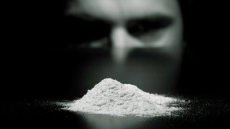The mystery behind how the first organisms on earth could have become metabolically active has been unlocked.
Researchers from University of Cambridge have reconstructed ancient ocean to speculate how primitive cells learned to synthesise their organic components - the molecules that form RNA, lipids and amino acids.
Almost four billion years ago, life on earth began in iron-rich oceans that dominated the surface of the planet.
“The conditions and molecules found in the earth's ancient oceans assisted and accelerated the interconversion of metabolites that in modern organisms make up glycolysis and the pentose-phosphate pathways - two of the essential and most centrally placed reaction cascades of metabolism,” explained Markus Ralser from department of biochemistry at University of Cambridge.
A reconstruction of earth's earliest ocean in the lab revealed the spontaneous occurrence of the chemical reactions used by modern cells to synthesise many of the crucial organic molecules of metabolism.
Previously, it was assumed that these reactions were carried out in modern cells by metabolic enzymes.
“Finding a series of reactions that resembles the `core of cellular metabolism' suggests that metabolism predates the origin of life,” Ralser noted.
This implies that, at least initially, metabolism may not have been shaped by evolution but by molecules like RNA formed through the chemical conditions that prevailed in the earliest oceans.
According to Ralser, “In the reconstructed version of the ancient Archean ocean, these metabolic reactions were particularly sensitive to the presence of ferrous iron that helped catalyse many of the chemical reactions that we observed”.
The study was published in the journal Molecular Systems Biology.






